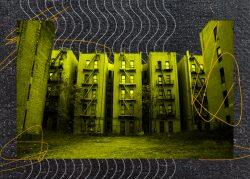Chicago Mayor Brandon Johnson and the city’s Department of Housing launched a new program that works with local developers to rehabilitate abandoned buildings in historically disinvested neighborhoods and resell them to local residents.
Through the Rebuild 2.0 program, an expansion of the Rebuild pilot program, the city will acquire vacant or abandoned buildings in close proximity to one another and redevelop them into housing for local prospective homeowners, according to a news release from the mayor’s office. The goal is that aggregating homes for redevelopment in this way will reduce blight and create communities of newly revitalized blocks or neighborhoods.
The program will be supported by a $20 million grant from the Illinois Housing Development Authority, which will flow through two local “community development financial institutions” – the Chicago Community Loan Fund and Greenwood Archer Capital.
“Our partnership with the Chicago Department of Housing and others helps us provide financing and technical assistance to developers,” Bob Tucker, Interim President at Chicago Community Loan Fund, said in the release. “Rebuild 2.0 provides acquisition and rightsizing incentives to reduce total development costs, enabling community developers to rehab residential housing stock and strengthen communities that have been challenged for years by redlining and disinvestment with new homeownership opportunities.”
Cook County Treasurer Maria Pappas’ office has estimated vacant lots and abandoned properties cost the county $1.15 billion in tax revenue annually.
Rebuild 2.0 leverages a few different tools at the city’s disposal. One of them is the Department of Housing’s forfeiture process, which will allow properties with demolition orders to instead be forfeited to the program.
This will help the city aggregate buildings that, oftentimes, have been sitting empty for years and would have otherwise become vacant lots waiting for investment that may never come. The program will employ more aggressive interventional tools to get vacant buildings restored as residential assets, according to the news release.
“The comprehensive strategy will be to purchase available vacant properties while working to acquire tax burdened and demolition list properties, which will require additional time and relevant partnerships,” Will Edwards, deputy commissioner of the department’s Housing Preservation Bureau, said in the release.
The city has been working toward these goals through the Chicago Neighborhood Rebuild pilot program, which invested $6 million to rehabilitate 50 vacant homes in the neighborhoods of Garfield Park, Humboldt Park, and Englewood, according to the city’s website.
Neighborhoods like these have seen very little investment from major financial institutions over the years compared to other areas of the city. A 2020 WBEZ investigation found that lenders invested more into Lincoln Park, a predominantly white neighborhood, than all of the city’s predominantly Black neighborhoods combined.
Read more


This new program would expand the city’s rehabilitation work to other areas of the city that experience similar levels of disinvestment, many of them on the city’s South and West sides. It also aims to build wealth among the local, smaller developers it partners with and maintain local ownership of the homes once finished, according to the news release.
Housing was a major component of Johnson’s mayoral campaign. He has often said the city has an affordable housing crisis.
“Rebuild 2.0 reflects our commitment to addressing decades of disinvestment by turning vacant properties into opportunities for homeownership and economic empowerment,” Johnson said in the news release. “This program not only strengthens our neighborhoods but also uplifts local developers and ensures that every Chicagoan has a stake in our city’s future.”
